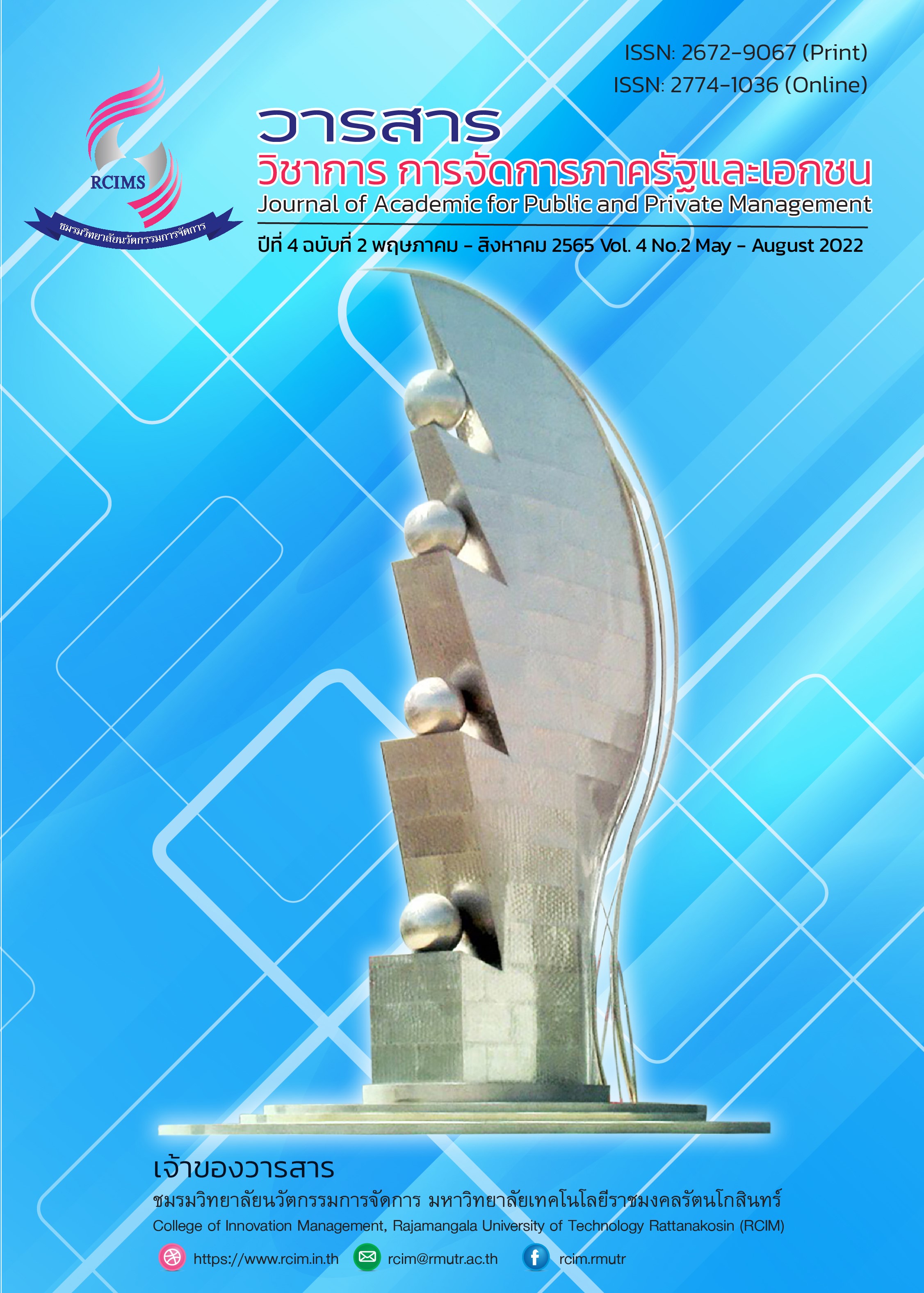การทดสอบสารพฤกษเคมี และฤทธิ์ในการต้านอนุมูลอิสระของกัญชา
Main Article Content
บทคัดย่อ
ในปัจจุบันกัญชาในประเทศไทยเป็นพืชที่กำลังได้รับความนิยมอย่างแพร่หลาย เนื่องจากกัญชาบางส่วนได้รับการปลดล็อกออกจากกฎหมายยาเสพติดประเภท 5 การทดสอบสารพฤกษเคมี และฤทธิ์ในการต้านอนุมูลอิสระของกัญชา มีวัตถุประสงค์เพื่อศึกษาสารพฤกษเคมี และฤทธิ์ต้านอนุมูลอิสระของสารสกัดหยาบกัญชา เป็นการวิจัยเชิงปริมาณและคุณภาพ มีขั้นตอนการวิจัย 4 ขั้นตอน คือ การเตรียมสารสกัดหยาบ การหาระบบการแยกสารบริสุทธิ์ การทดสอบองค์ประกอบ และการทดสอบฤทธิ์ต้านอนุมูลอิสระ การวิเคราะห์ข้อมูล ใช้การวิเคราะห์ค่าเฉลี่ย 3 ซ้ำ และการวิเคราะห์ความเข้มข้นของสารสกัด
ผลการทดลองพบว่า ในสารสกัดหยาบกัญชาพบสารพฤกษเคมีดังนี้ Terpenoids พบได้ในทุกตัวทำละลาย Anthraquinone และTannins ไม่พบในทุกตัวทำละลาย Saponins พบในตัวทำละลาย Hexane
และ Dichloromethane, Flavonoids พบในตัวทำละลาย Dichloromethane, Ethyl acetate, Ethanol และ Methanol สุดท้ายคือ Alkaloids พบในตัวทำละลาย Ethanol, Methanol และ Distilled water ในส่วนของฤทธิ์การต้านอนุมูลอิสระของกัญชา พบว่า สารสกัดหยาบทุกชนิดมีฤทธิ์ต้านอนุมูลอิสระ ความเข้มข้นต่ำสุดจากการทดลอง 0.15 มิลลิกรัมต่อมิลลิลิตร สารสกัดหยาบ Methanol มีฤทธิ์ในการต้านอนุมูลอิสระเทียบเท่ากับ Vitamin C 53.57±0.06 และ 54.58±0.00 มิลลิกรัมต่อมิลลิลิตร ตามลำดับ
Article Details

อนุญาตภายใต้เงื่อนไข Creative Commons Attribution-NonCommercial-NoDerivatives 4.0 International License.
เอกสารอ้างอิง
Atakan, Z. (2012). Cannabis, a complex plant: Different compounds and different effects on individuals. Therapeutic Advances in Psychopharmacology, 2(6), 241-54.
Bakkalbasi, E. et al.. (2009). Food ellagitannins-occurrence, effects of processing and storage. Crit Rev Food Sci Nutr, 49(3), 283-298.
Begley, C.E. (2012). Access to are. In: Loue S, Sajatovic M, eds. Encyclopedia of Immigrant Health. Vol. 1. New York: Springer Science+Business Media.
Borgelt, L.M. et al. (2013). The pharmacologic and clinical effects of medical cannabis. Journal of the pharmacotherapy, 33(2), 195-209.
Brenneisen, R. (2007). Chemistry and Analysis of Phytocannabinoids and Other Cannabis Constituents in Marijuana and the Cannabinoids. New Jersey: Humana Press.
Fantini, M. et al. (2015). In vitro and in vivo antitumoral effects of combinations of polyphenols, or polyphenols and anticancer drugs: perspectives on cancer treatment. Journal of the Mol Sci, 16(5), 9236-9282.
Gonda, R. et al. (2000). Studies on the constituents of Anaxagorea luzonensis A. GRAY. Chem Pharm Bull (Tokyo), 48(8), 1219-1222.
Gulcin, I. (2005). The antioxidant and radical scavenging activities of black pepper (Piper nigrum) seeds. Journal of the Food Sci Nutr, 56(7), 491-499.
Kaur, G. et al. (2006). Evaluation of antioxidant activity of Cassia siamea flowers. Journal of the Ethnopharmacol, 108(3), 340-348.
Li, H.L. (1974). An archaeological and historical account of cannabis in China. Economic Botany, 28(4), 437-448.
Lobo, V. et al. (2010). Free radicals, antioxidants and functional foods: Impact on human health. Pharmacogn Rev, 4(8), 118-126.
Radhakrishnan, R. et al. (2014). Gone to pot-a review of the association between cannabis and psychosis. Frontiers in Psychiatry, 5(54),1-24.
Russo, E.B. (2007). History of cannabis and its preparations in saga, science, and sobriquet. Chem Biodivers, 4(8), 1614-1648.
Skoglund, G. et al. (2013). Viking and early Middle Ages northern Scandinavian textiles proven to be made with hemp. Sci Rep, 3, 2686.
Toda, S. (2005). Antioxidative effects of polyphenols in leaves of Houttuynia cordata on protein fragmentation by copper-hydrogen peroxide in vitro. Journal of the Med Food, 8(2), 266-268.
Wallace, M.S., Marcotte, T.D., Umlauf A, Gouaux B, Atkinson JH. (2015). Efficacy of inhaled cannabis on painful diabetic neuropathy. Journal of the Pain, 16(7), 616-27.


